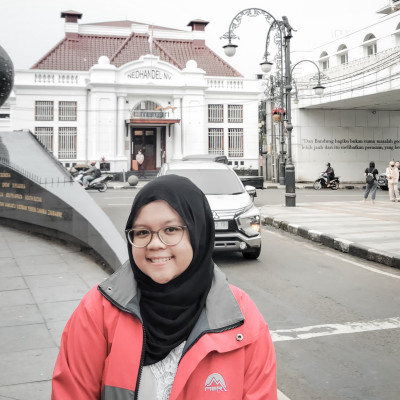The habit of enjoying coffee has become one of the most popular traditions, especially in Southeast Asia. In Indonesia, this tradition existed long before the emergence of modern cafes and coffee outlets.
One form of development that can be seen is the Kopitiam culture which has its roots in Malaysia.
Kopitiam is a term for a traditional coffee shop or warung kopi in Southeast Asia. The term “Kopitiam” has its own uniqueness and what makes it special?
Read on, Seasians!
Kopitiam Culture in Southeast Asia
Kopitiam has a unique appeal, especially among coffee and traditional food lovers. These coffee shops or stalls are not just a gathering place, but also steeped in history, tradition and philosophy.
According to nationalgeographic, the origin of the name “Kopitiam” is a combination of two languages, namely “kopi” in Malay and “tiam” which means shop in Hokkien. This combination of languages reflects the acculturation between the cultures of the local people, especially in Singapore and Malaysia, and the Chinese community in Southeast Asia.
“If the shop is owned by a Chinese, then the local Chinese will call it Kopitiam. However, if it is managed by a non-Chinese, it will be called a coffee shop,” said Johanes Herlinjanto, a Chinese community observer and sinologist, cited from nationalgeographic.
Kopitiam isn’t just a place to enjoy coffee, but usually also offers a variety of simple menus that are rich in authentic flavors for its connoisseurs. Kopitiam has long been a gathering place for workers who want to enjoy coffee in a simple way. During the colonial era, Kopitiam also became one of the centers of social interaction, especially in cities near the port.
The majority of Kopitiam shop owners are Chinese who rework local recipes with their own unique twist. One of the most identical with Kopitiam is the simple yet memorable menu choices.
Read also: Brewing a Nation: The Timor-Leste Coffee Festival Experience
Nostalgic Atmosphere at Kopitiam
Kopitiam, in terms of its décor, maintains a classic vintage look that takes you back in time. The cozy atmosphere, filled with memories, and traditional ornaments such as marble tables, rattan chairs, and large mirrored walls create a strong sense of nostalgia.
The sounds of dinner conversations coupled with the clanging of plates and glasses create the sensation of being in a surreal flashback. The coffee served at Kopitiam is mostly dominant in flavor, with a thick aroma and traditional brewing methods, served in ceramic cups. This presentation also reflects the fusion of Malay and Chinese cultures.
The iconic menu includes coffee brewed using a filter cloth, then sweetened condensed milk is added to produce a creamier flavor.
Aside from coffee, another mainstay of the menu is the signature toast with a selai kaya made from a mixture of eggs, coconut milk, sugar, and screwpine (pandan), usually accompanied by a half-boiled egg topped with soy sauce and pepper. It's a simple combination, but very appetizing.
Kopitiam is also famous for its nasi lemak, which is rice cooked in coconut milk and served with sambal, egg, anchovies and peanuts. Another signature and authentic dish is the “O” coffee, which is a black coffee without sugar, with the uniqueness of using Robusta coffee beans roasted with margarine and sugar, creating a unique flavor.
Kopitiam also serves traditional snacks such as angku kueh and onde-onde, which are unique in every bite.
Read also: Tea or Coffee? What Southeast Asia Really Loves to Sip
The Spread of Kopitiam in Southeast Asia
Kopitiam has a long history and is closely related to the Peranakan culture or Chinese community that has long settled in the Southeast Asian region of Malaysia, Singapore and Indonesia.
The History of Kopitiam was from the 19th century, where the development of Kopitiam was heavily influenced by Chinese immigrants who came to the Malay peninsula (Malaysia and Singapore) in search of jobs and economic opportunities.
Chinese immigrants, particularly from Hainan, found Malaysia to be a promising place for agriculture and mining.
The culture of tea and coffee consumption brought by Chinese immigrants led to the concept of Kopitiam, combining the coffee culture of both Chinese and Malaysians. The Kopitiam tradition is rich with a Malaysian atmosphere with a diverse menu and familiar flavors tailored to the Malay community. In the 1960s, Kopitiam grew in popularity after World War II and continued to expand until Singapore.
In Indonesia, Kopitiam is very popular, especially in areas with a Chinese population, such as Medan and Pontianak. The Kopitiam tradition in Indonesia reflects the local culinary culture although it is still unevenly distributed.
Singkawang, became the first place where Kopitiam emerged in Indonesia around 1983, which later spread to the islands of Sumatra and Java.
The tradition of Kopitiam was originally rooted in the habits of Chinese immigrants who opened simple coffee shops as a place to relax and chat. Over time, Kopitiam has evolved into a significant public space in Southeast Asian society.
While it retains a nostalgic feel, its popularity continues to grow with many Kopitiams combining traditional and contemporary elements to appeal to the younger generation. Kopitiam is not just a place to enjoying the coffee, it is also a cultural institution that integrates the heritage of the past and the presentation of the present.
With the presence of Kopitiam, it is also expected to maintain the flavor and story of the coffee world for various generations. This ability to adapt and remain relevant is what makes Kopitiam worthy of being a key component in the future culinary map of Southeast Asia.



















